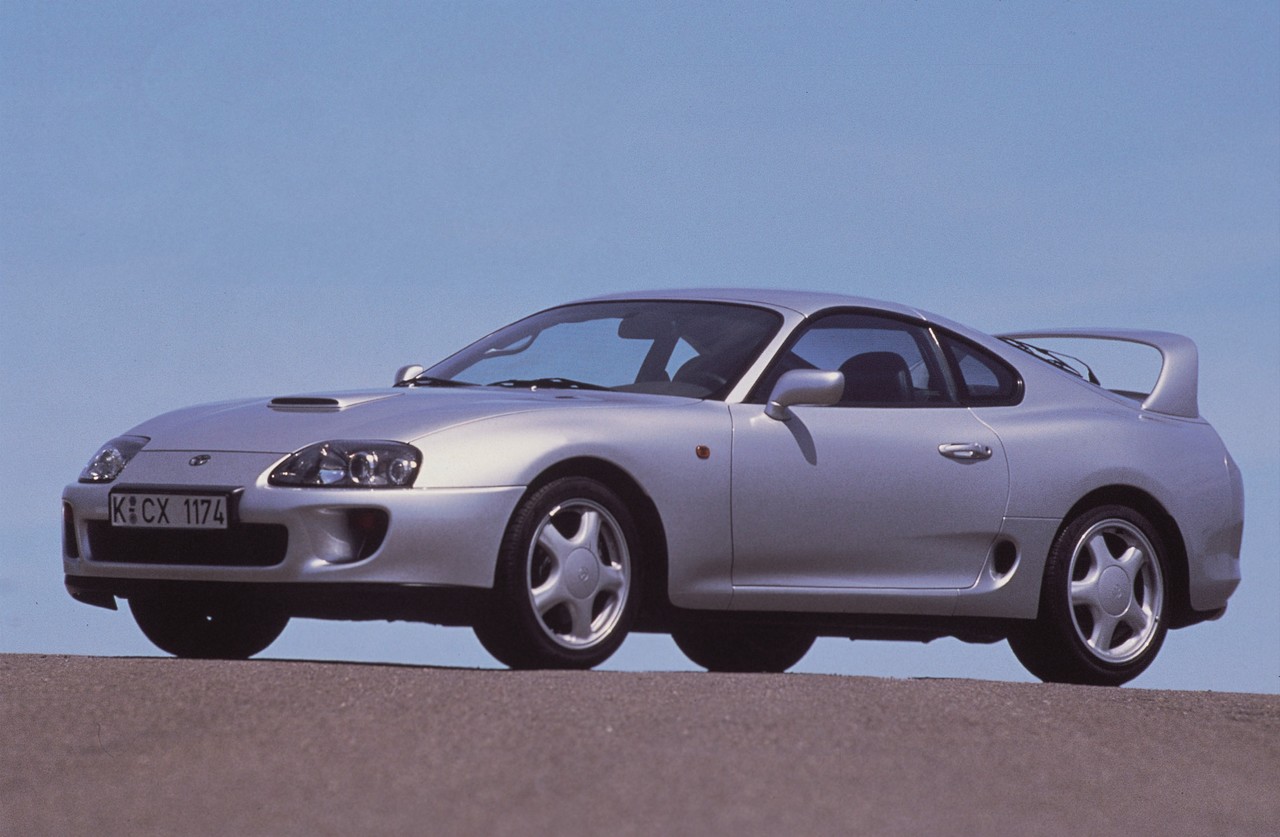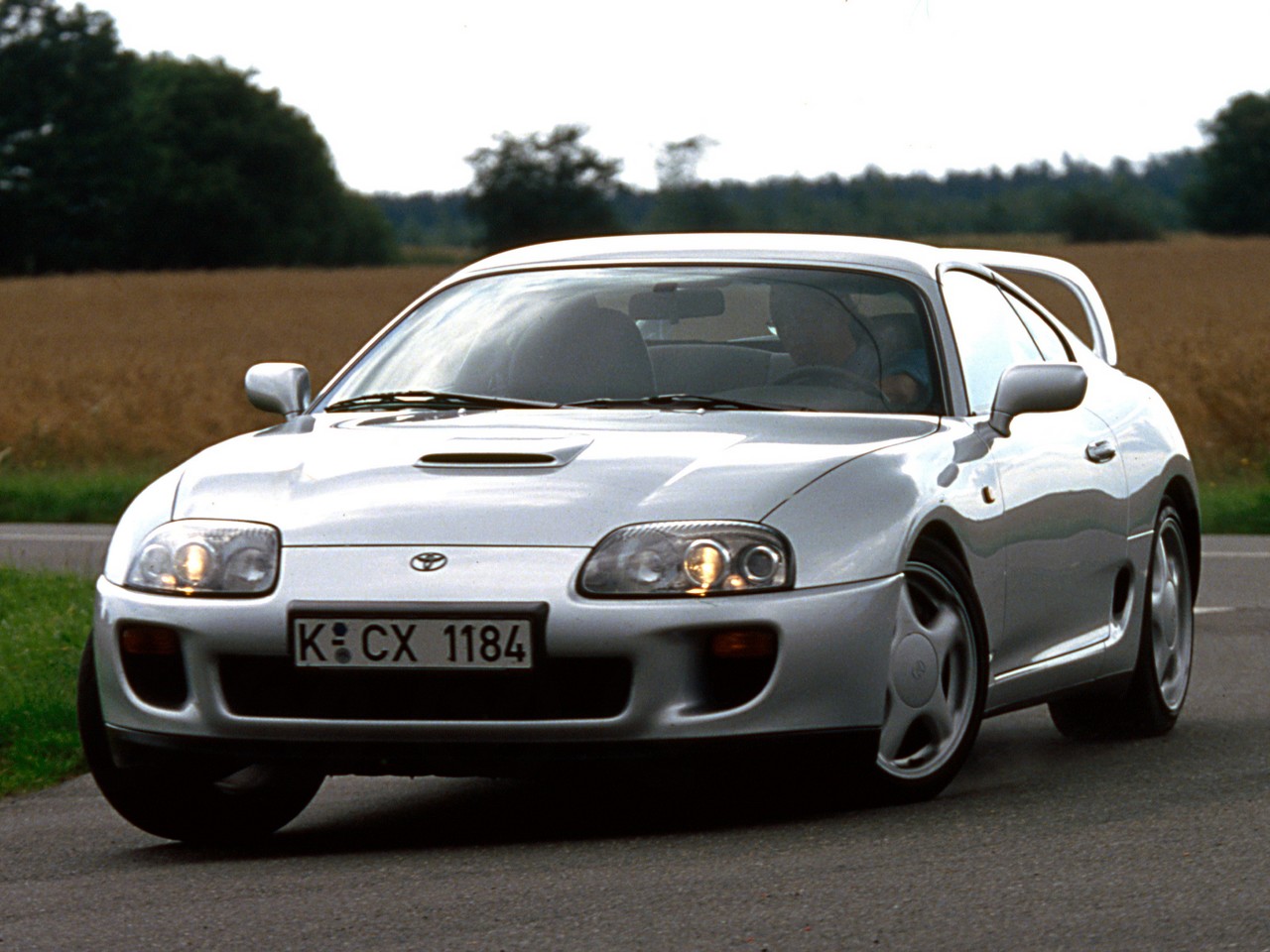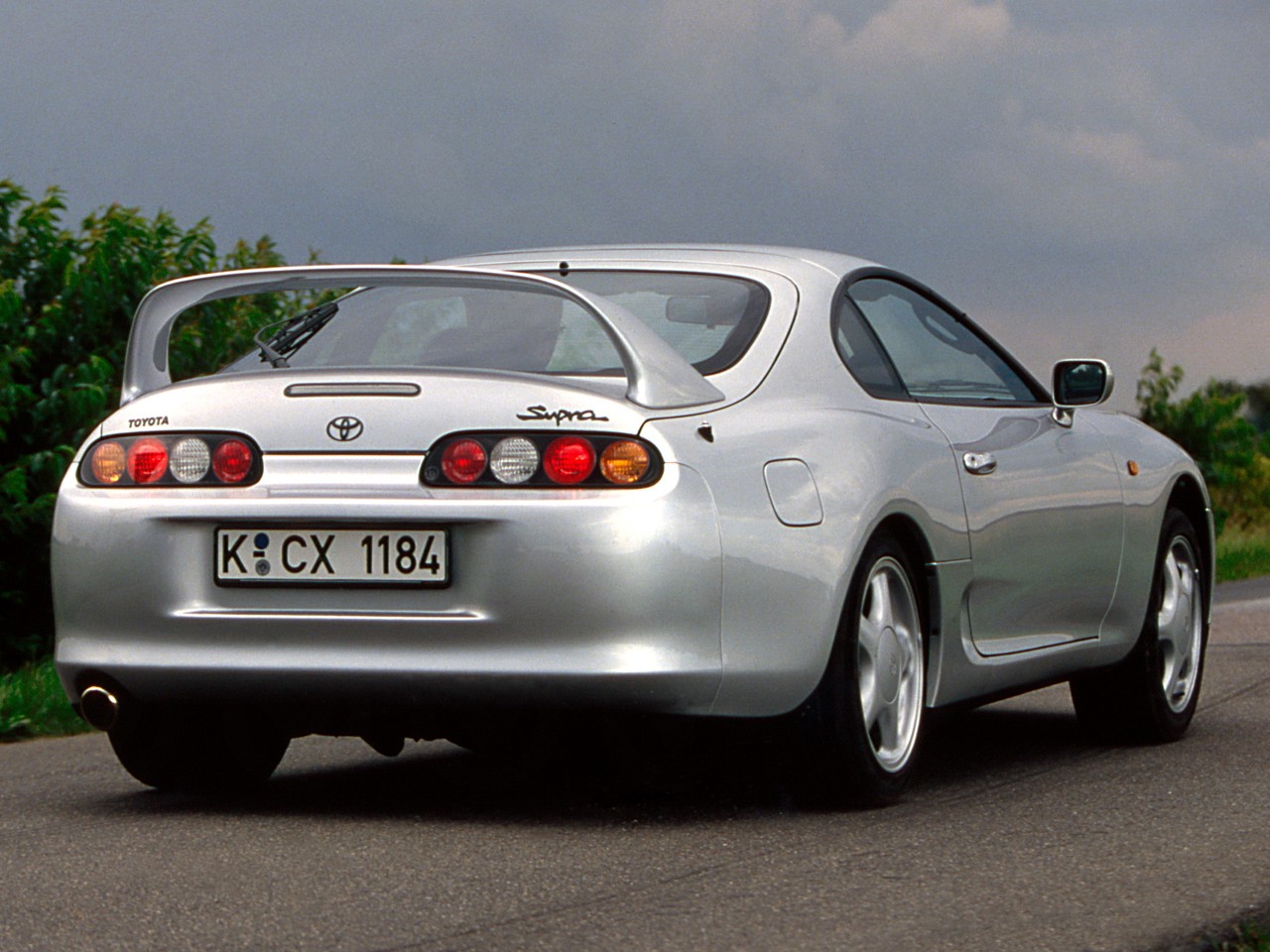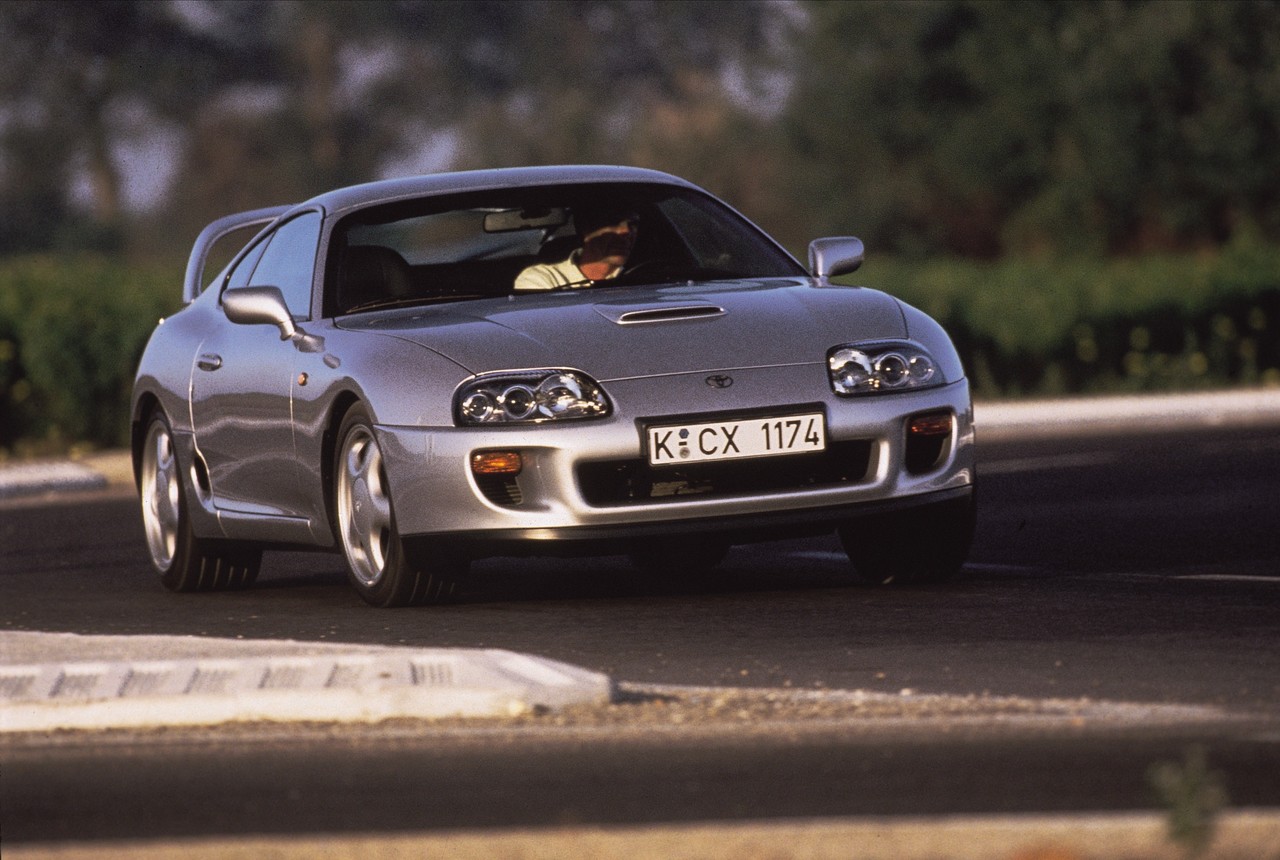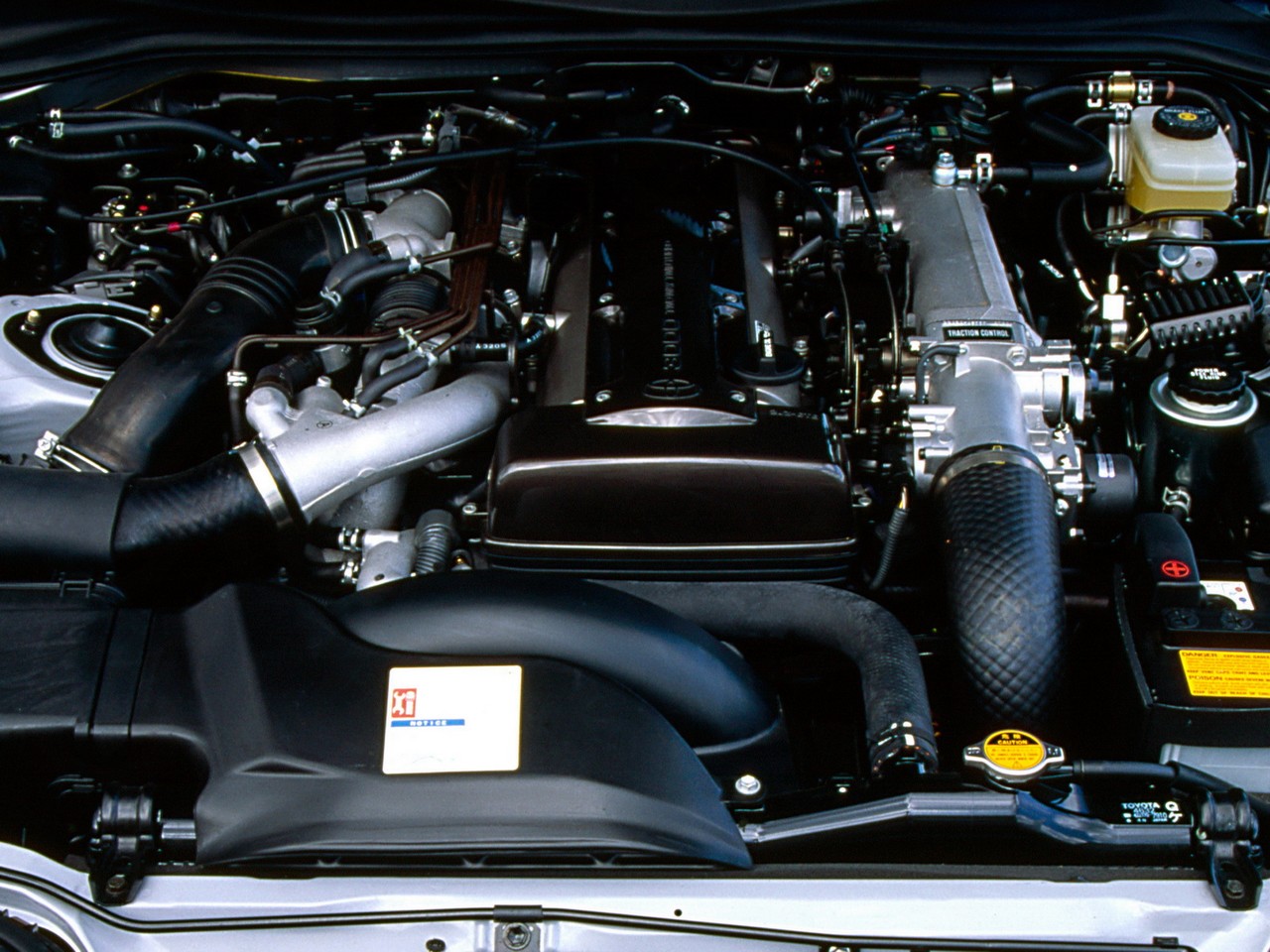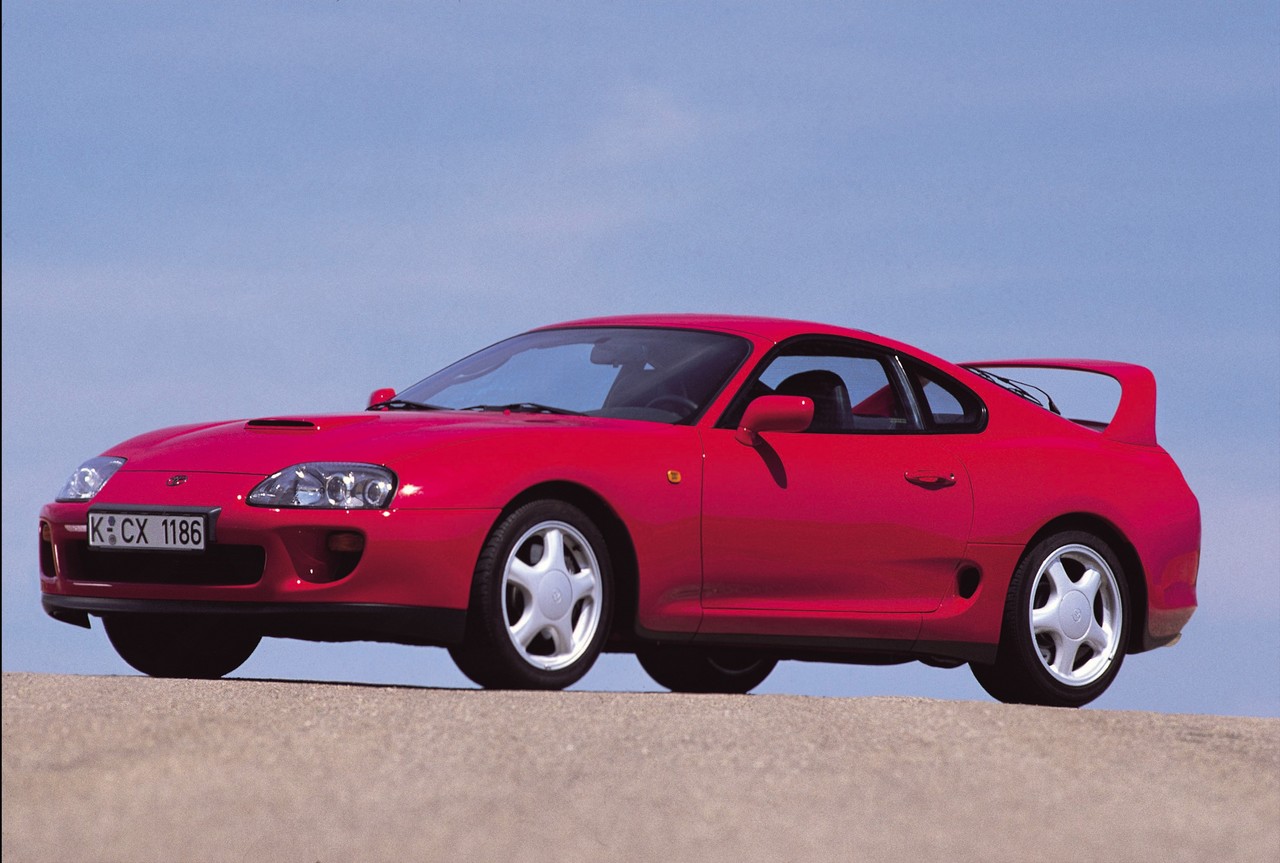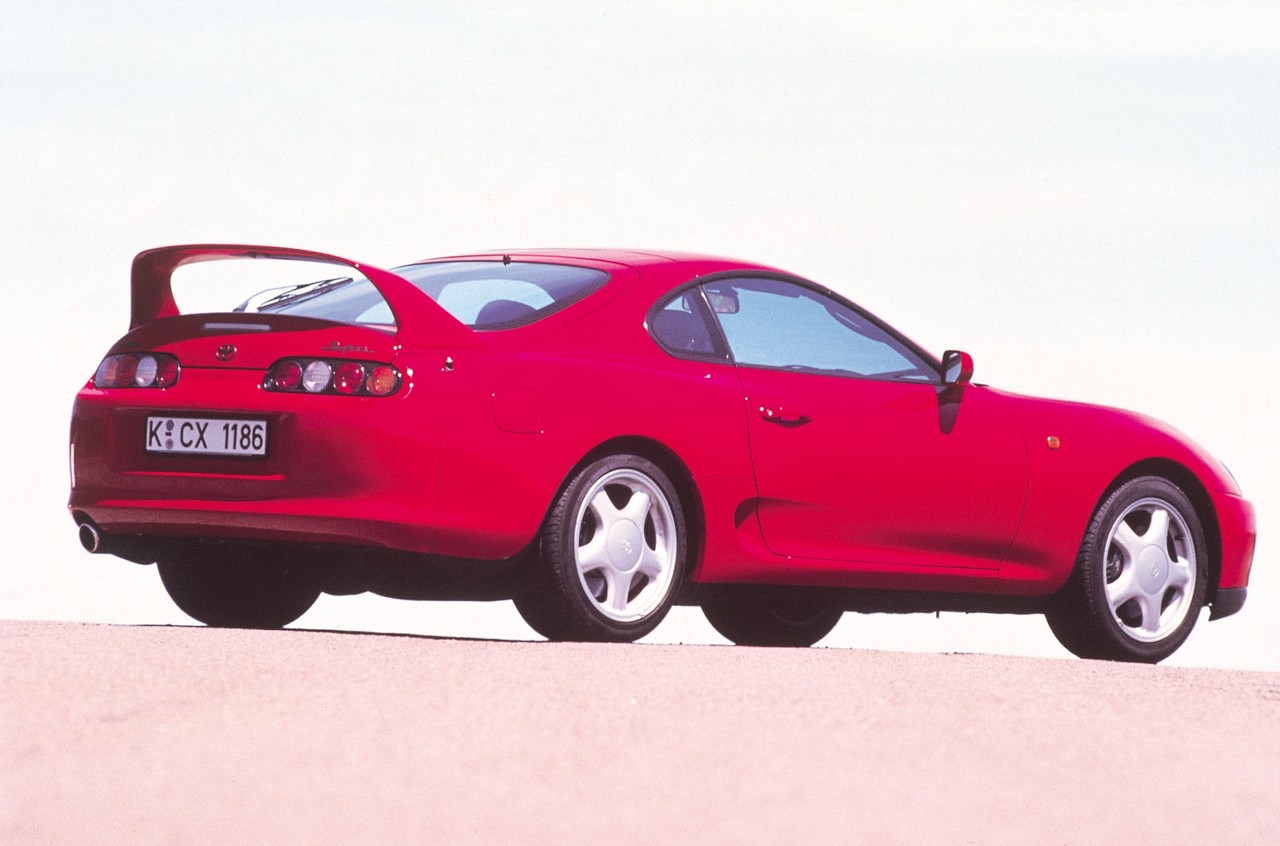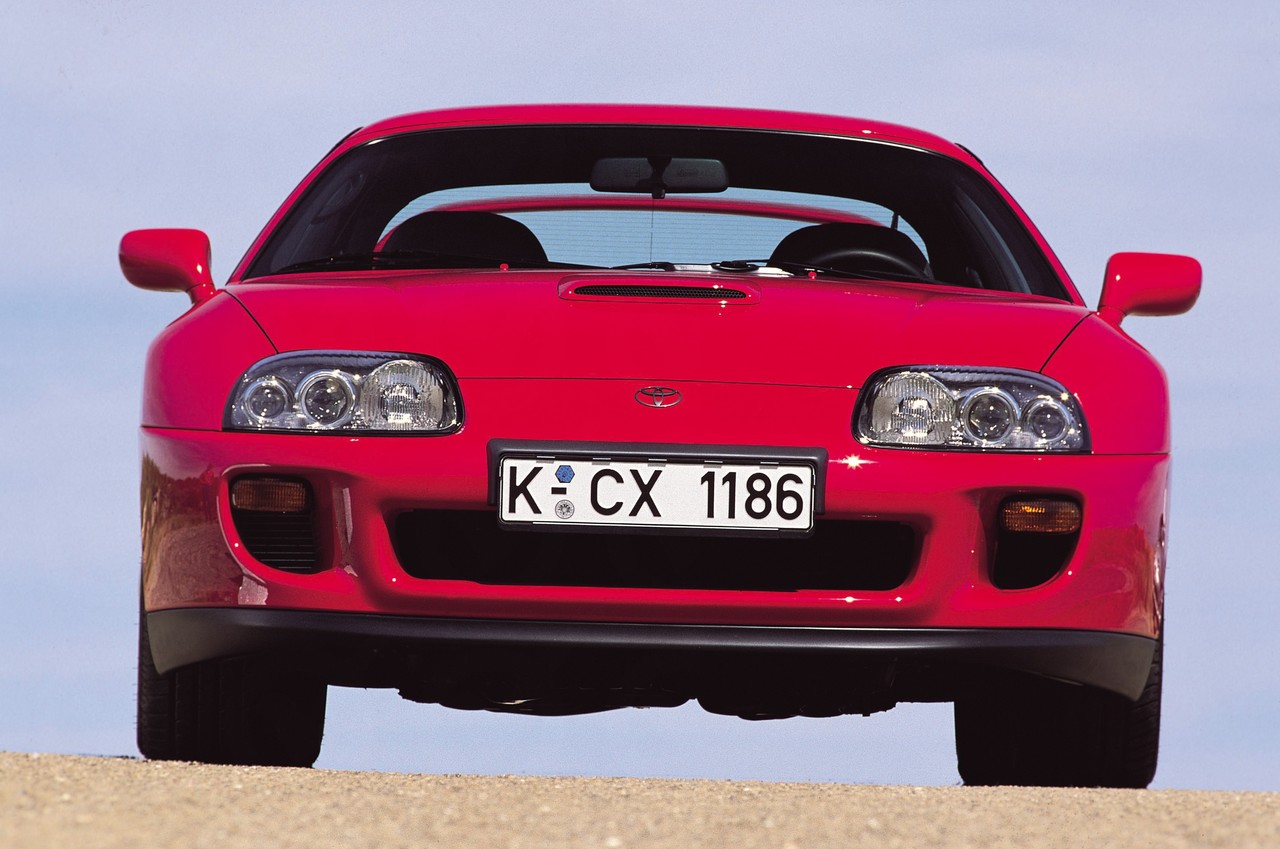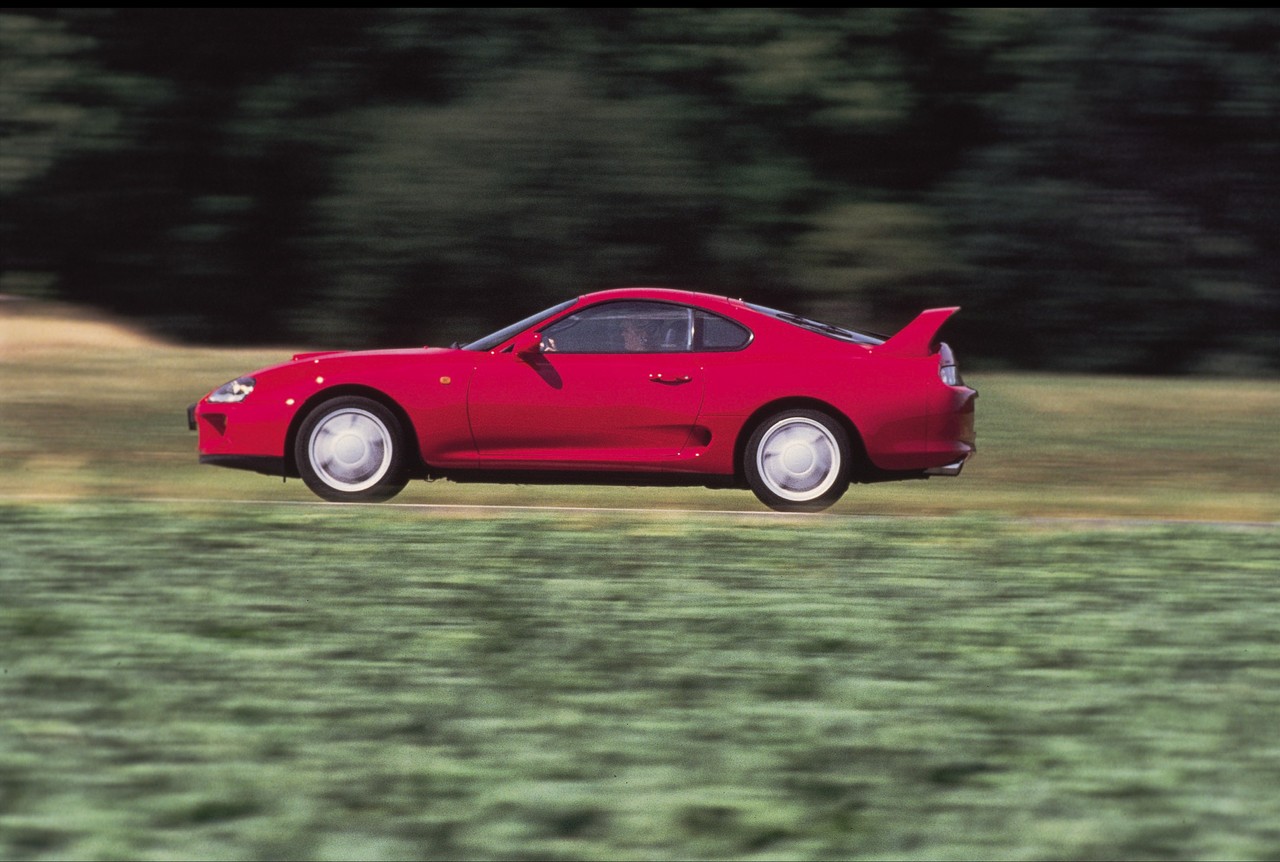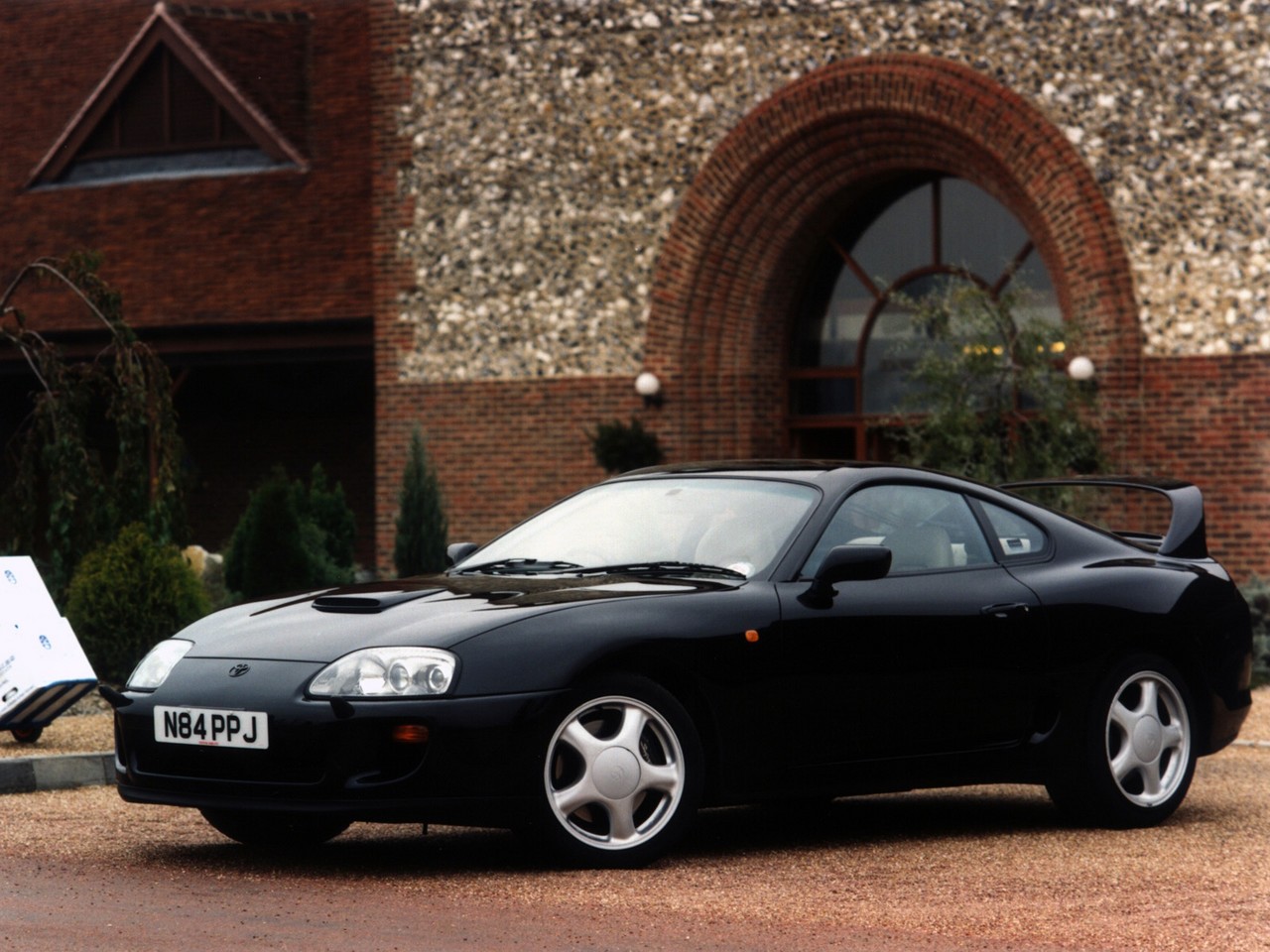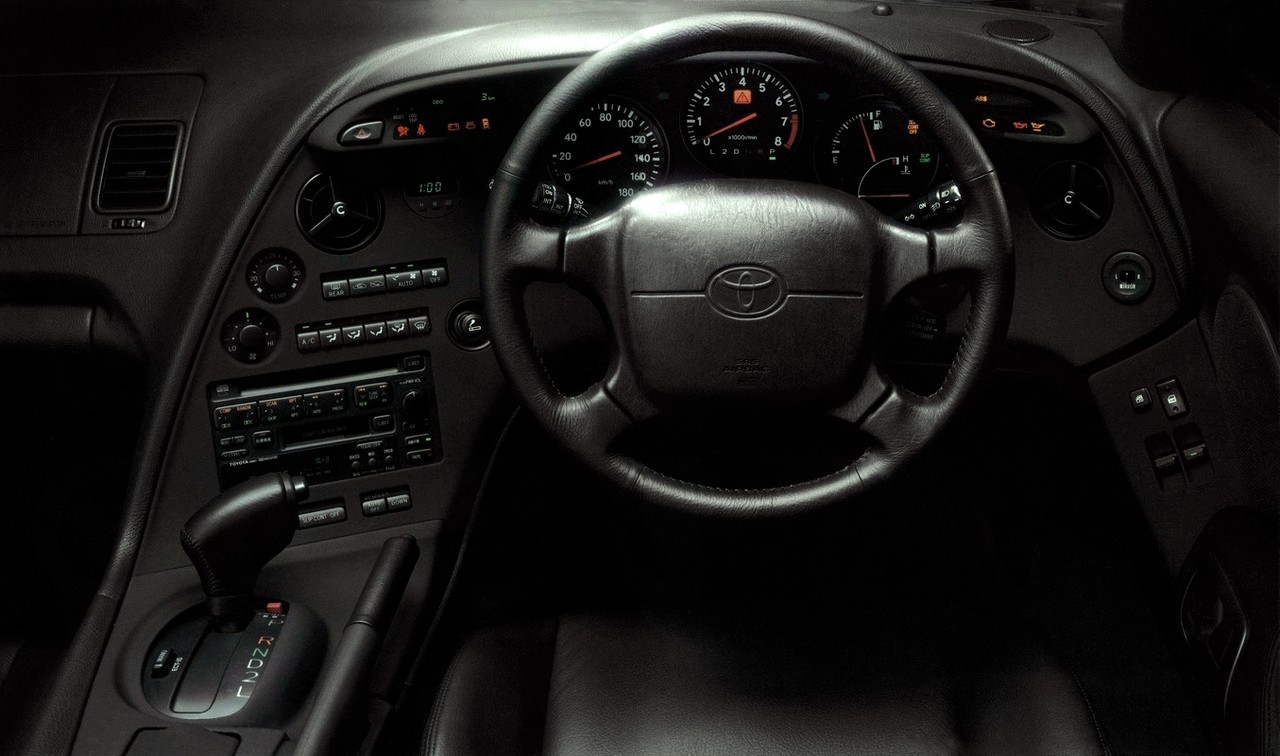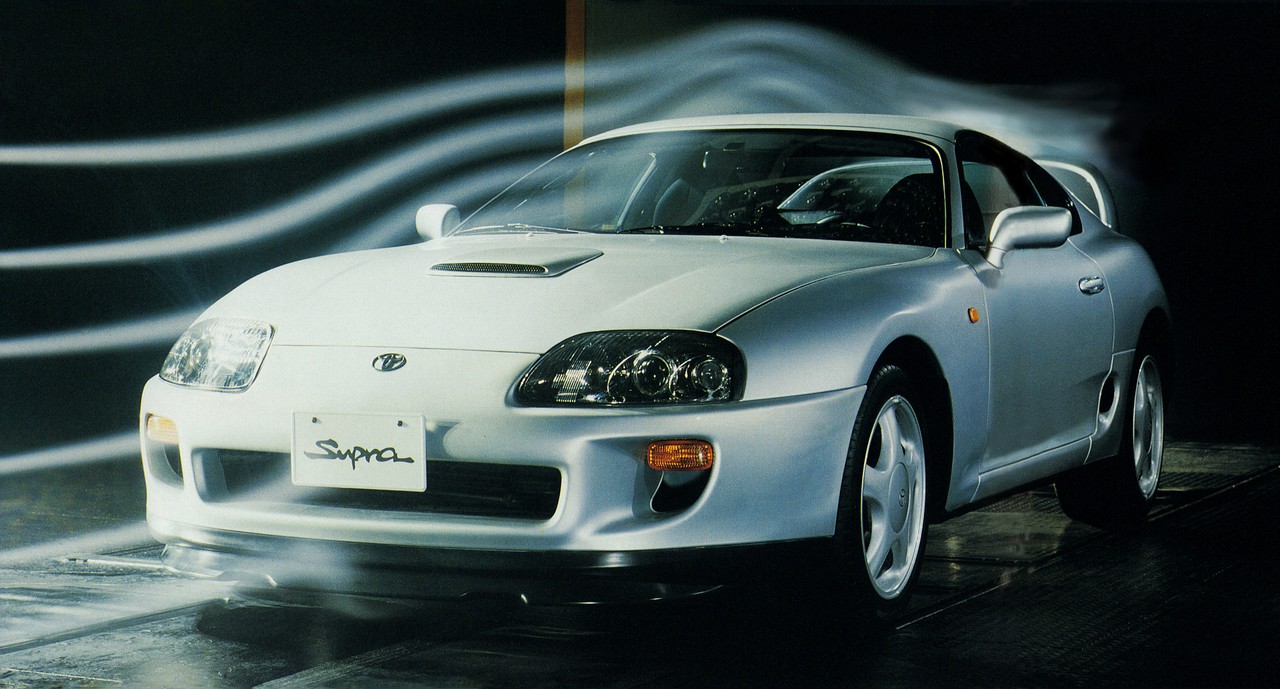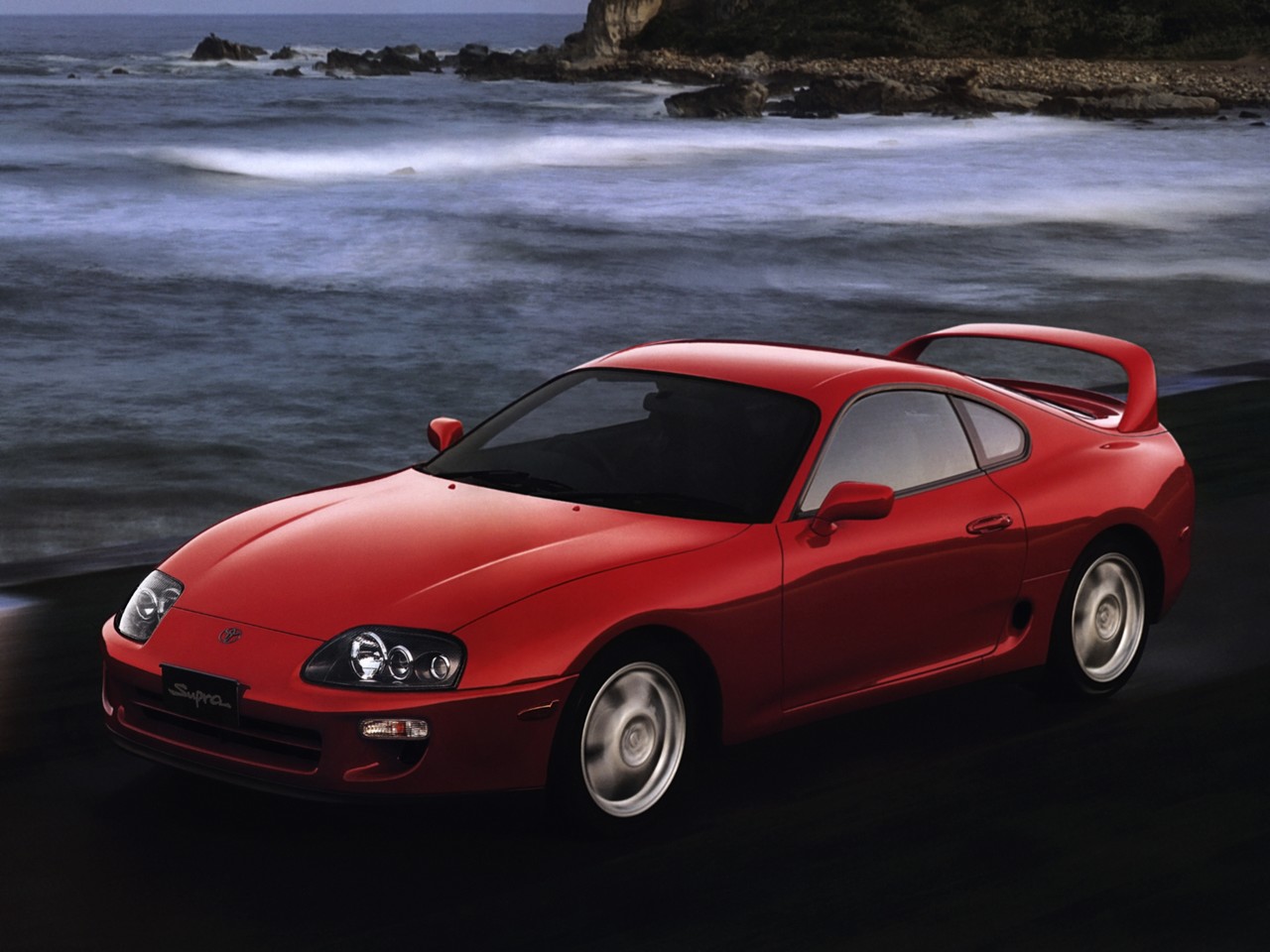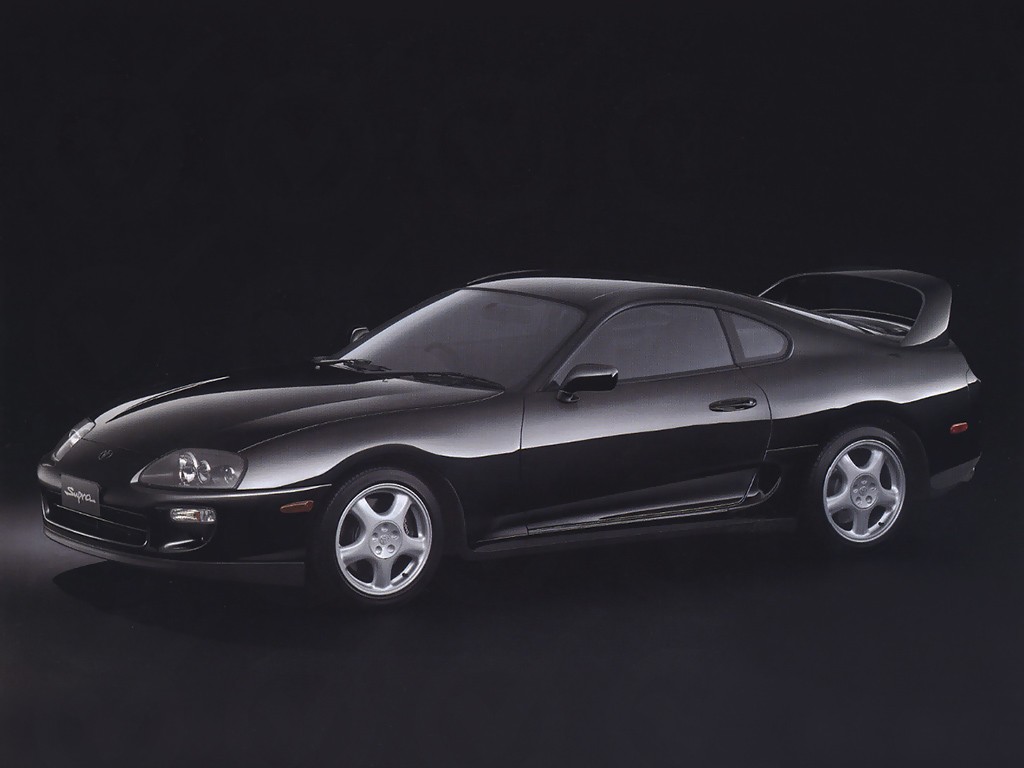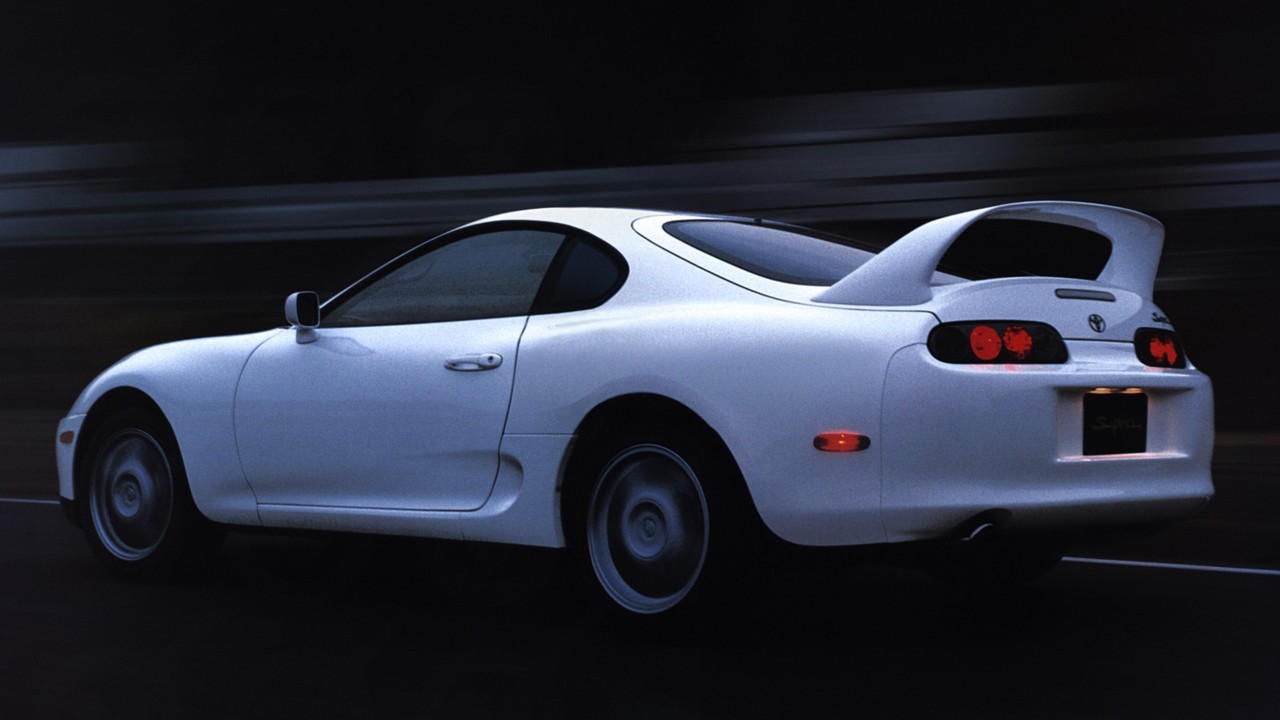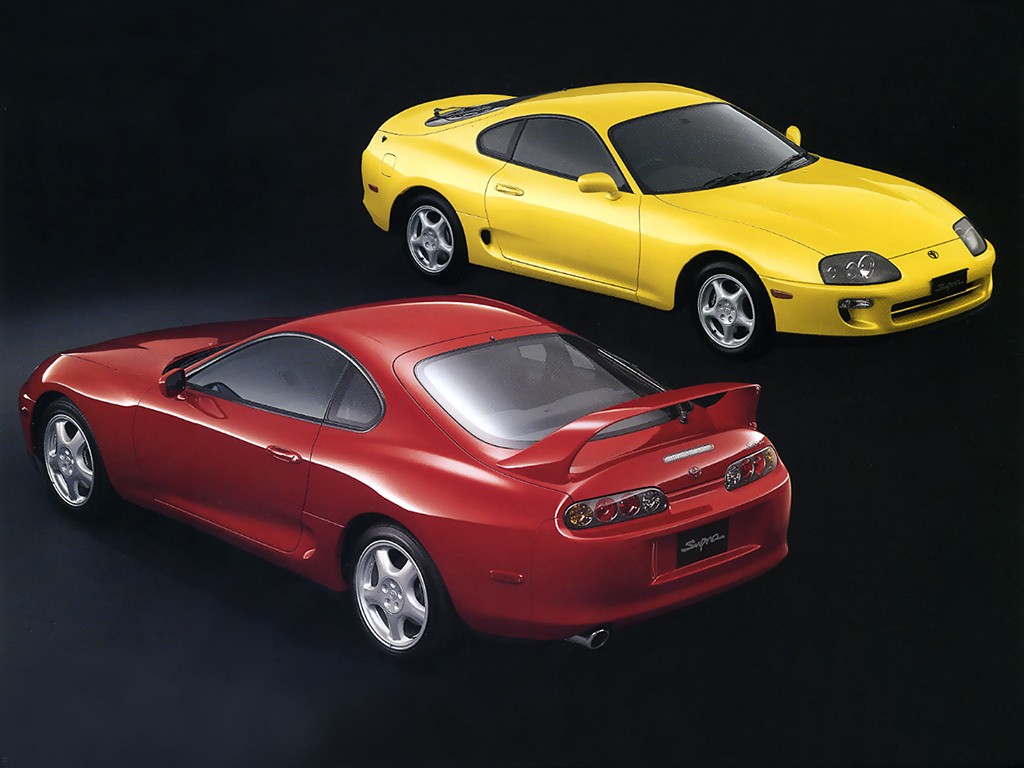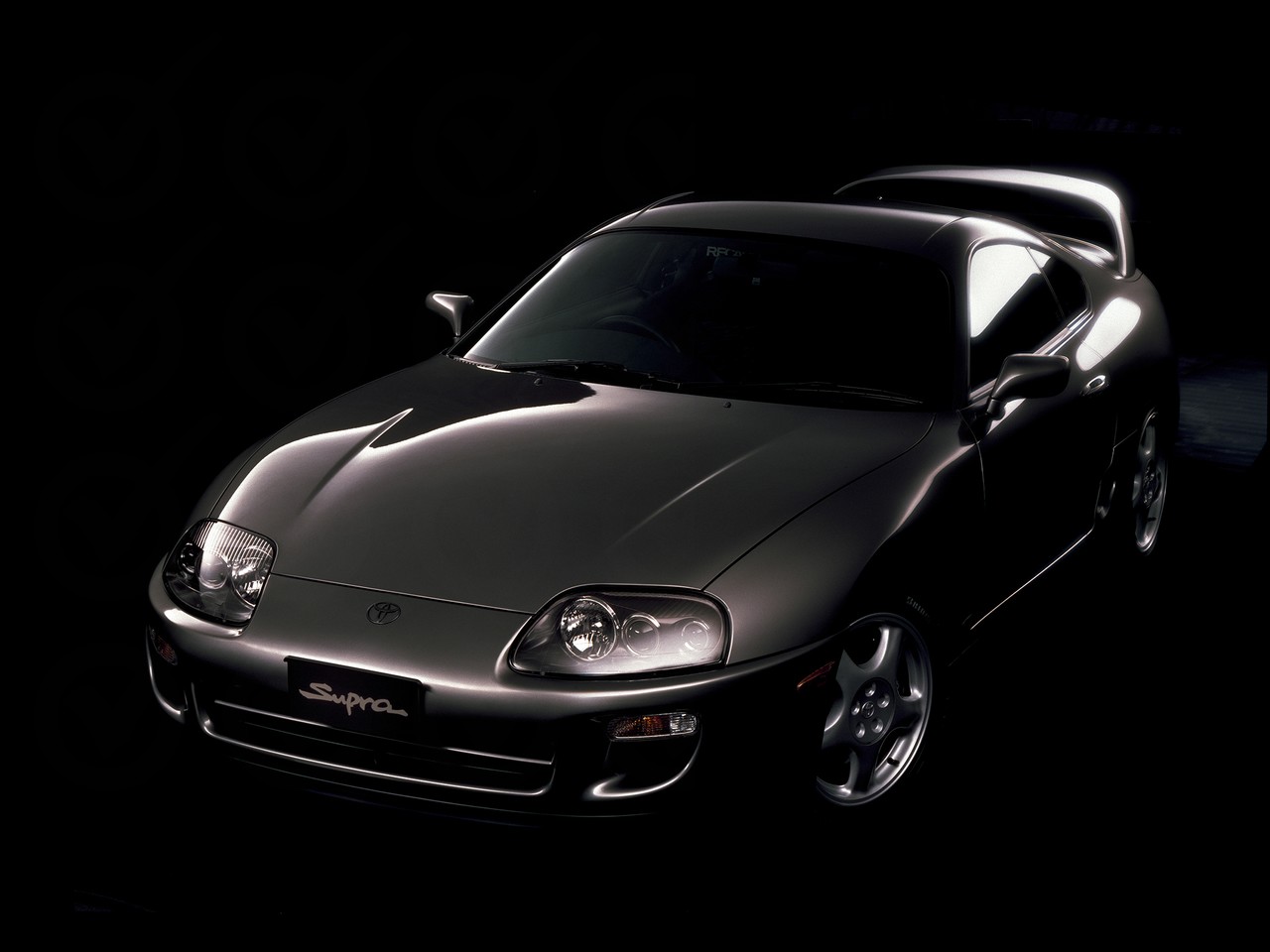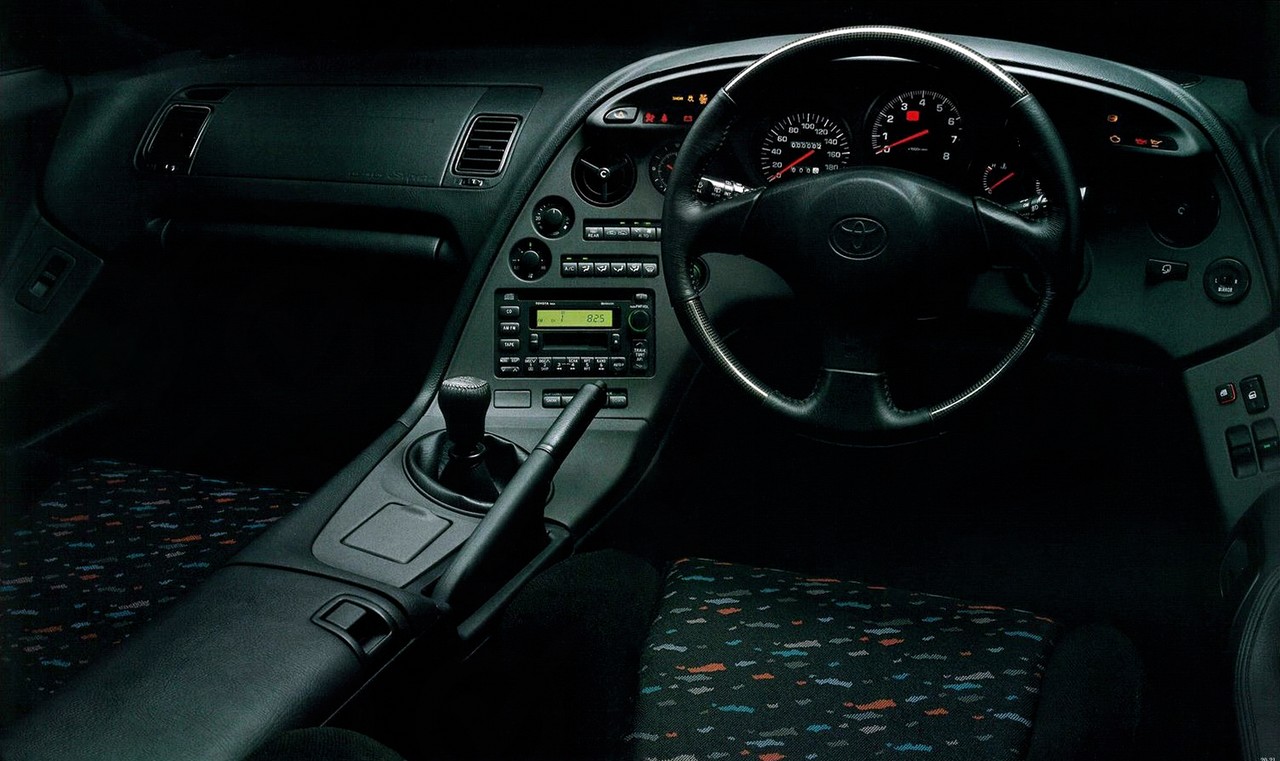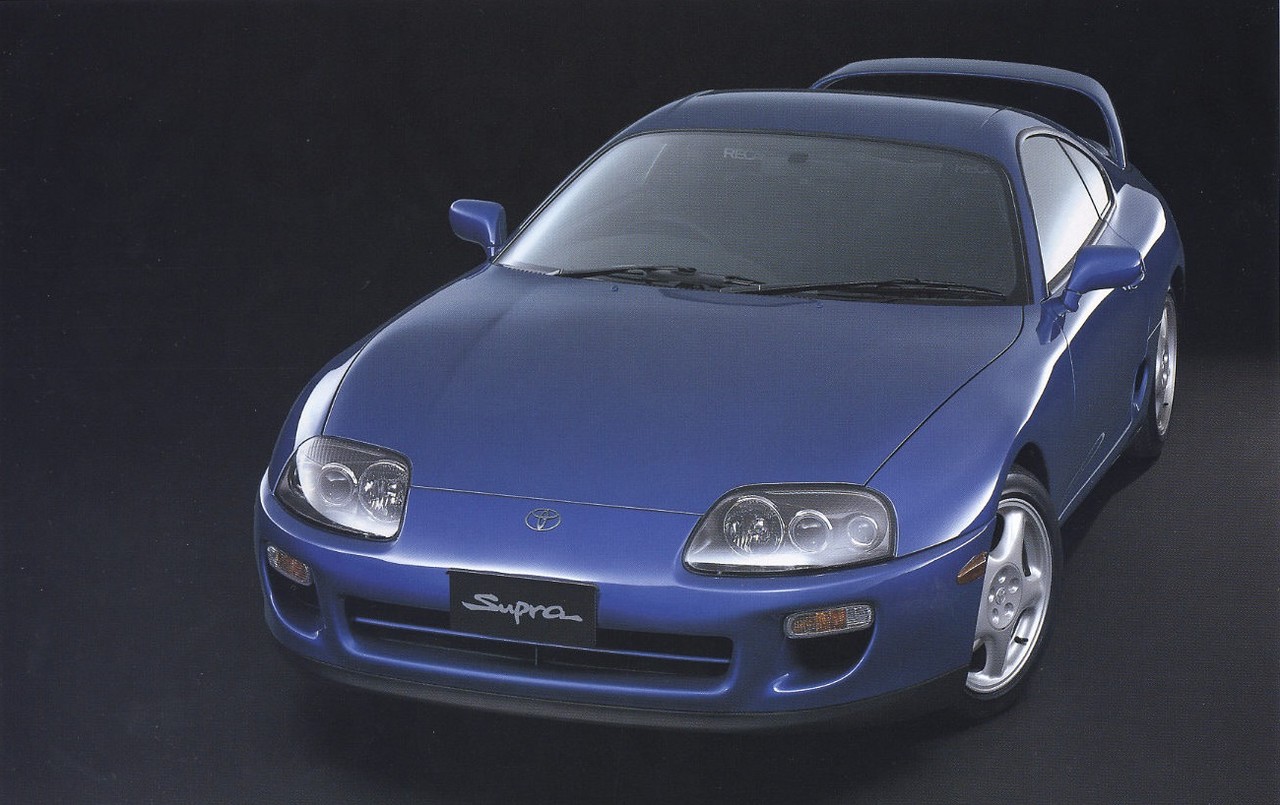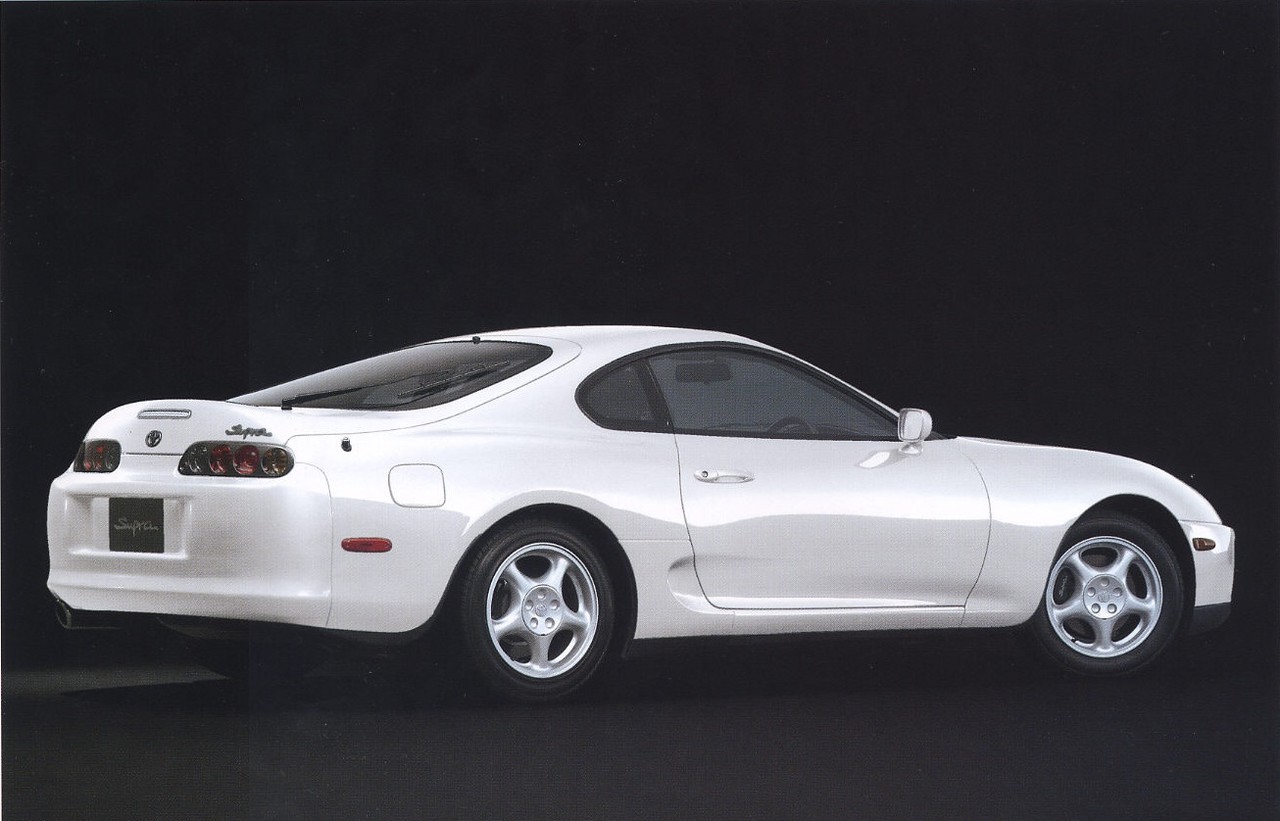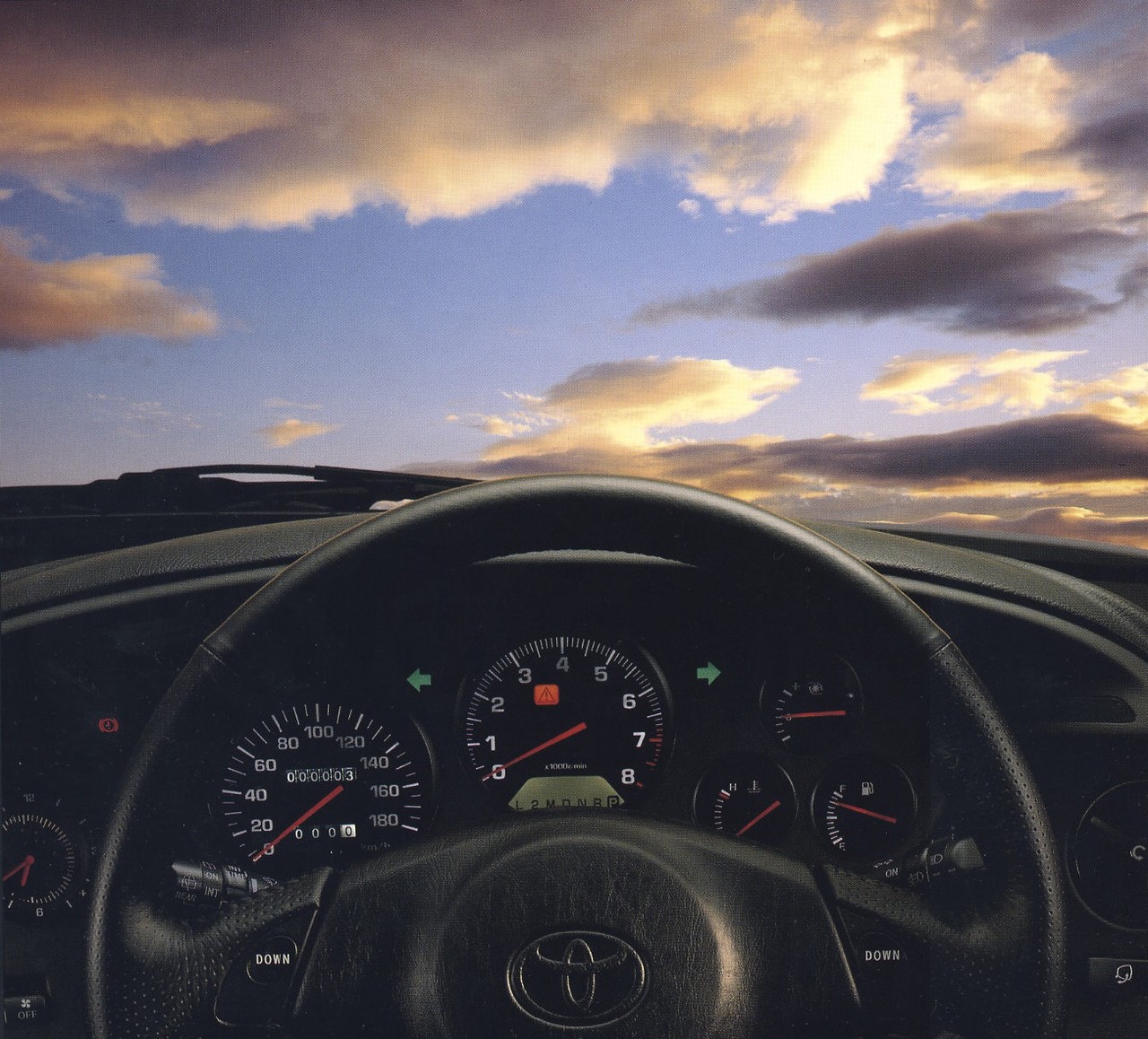
- Refined, free-revving 2JZ-GE I6 engine
- Powerful twin-turbo 2JZ-GTE engine
- Light clutch and short-throw manual transmission
- Excellent dynamics
- Responsive brakes
- Driver-oriented cockpit with supportive seats
- All Australian vehicles are private imports (so choose carefully)
- For Supra Turbo, big ratio gap between second and third gears
- Handbrake too close to gearshift lever
- Useless rear seats
- Shallow cargo area
- Valve stem seals susceptible to leaks
- First turbocharger susceptible to failure
Review: Toyota A80.I Supra (1993-96)
Overview
Released in May 1993, the Toyota A80 Supra was a three-door liftback that was available with fixed and targa (‘Aerotop’) roofs. Manufactured at Toyota’s Motomachi plant, the rear-wheel drive A80 Supra was initially available with 3.0-litre naturally aspirated and twin-turbocharged inline six-cylinder petrol engines.
Please note that the A80 Supra was not imported to Australia by Toyota Australia, such that local vehicles are private imports. Furthermore, this review considers the A80 Supra as it was produced for the Japanese market (JDM) as these are most common in Australia.
2JZ-GE and 2JZ-GTE engines
TThe 3.0-litre naturally aspirated 2JZ-GE six-cylinder petrol engine had a cast iron block, 86.0 mm bores, an 86.0 mm stroke, an aluminium cylinder head, electronic fuel injection, double overhead camshafts (DOHC), four valves per cylinder and a compression ratio of 10.0:1.
The 2JZ-GTE engine differed in that it had two sequential CT20A turbochargers (which had ceramic shafts), air-to-air side-mounted intercooler, recessed piston tops, oil spray nozzles to cool the pistons and a compression ratio of 8.5:1. Other mechanical changes for the turbocharged Supra included the throttle body and oil cooler. While Toyota quoted an official peak power figure of 206 kW, the actual figure is considerably higher and has been estimated at 240 kW.
Development
The A80 Supra utilised the subframe, suspension and drivetrain of the Toyota Z30 Soarer (also produced as the Lexus SC 300 and SC 400). To reduce mass, the A80 Supra utilised aluminium for the bonnet, targa top (where fitted), front cross member, oil and transmission pans, and suspension upper A-arms. Other mass reduction measures included hollow carpet fibres, magnesium steering wheel, a plastic gas tank and lid, and single-pipe exhaust.
Dimensions
The A80 Supra was 4515 mm long, 1811 mm wide, 1265 mm tall and had a 2550 mm long wheelbase. The entry-level Supra SZ had kerb mass of 1460 kg for the manual and 1485 kg for the automatic (targa top models added 18 kg), while the weight distribution was 51:49 front:rear. For the turbocharged Supra RZ, kerb mass was 1550 kg for the manual and 1555 kg for the automatic; its weight distribution was 53:47.
Suspension and steering
The A80 Supra had double wishbone front and rear with coil springs and rack-and-pinion, power-assisted steering.
| Variant | Engine | Trans. | Years | Peak power | Peak torque |
|---|---|---|---|---|---|
| SZ | 3.0-litre petrol I6 (2JZ-GE) |
5sp man., 4sp auto |
1993-96 | 165 kW at 6000 rpm | 284 Nm at 4800 rpm |
| SZ Aerotop | 3.0-litre petrol I6 (2JZ-GE) |
4sp auto | 1993-96 | 165 kW at 6000 rpm | 284 Nm at 4800 rpm |
| SZ-R | 3.0-litre petrol I6 (2JZ-GE) |
5sp man. | 1994-96 | 165 kW at 6000 rpm | 284 Nm at 4800 rpm |
| RZ-S | 3.0-litre twin-turbo petrol I6 (2JZ-GTE) |
6sp man., 4sp auto |
1995-96 | 206 kW at 5600 rpm | 431 Nm at 3600 rpm |
| RZ | 3.0-litre twin-turbo petrol I6 (2JZ-GTE) |
6sp man., 4sp auto |
1993-96 | 206 kW at 5600 rpm | 431 Nm at 3600 rpm |
| GZ | 3.0-litre twin-turbo petrol I6 (2JZ-GTE) |
4sp auto | 1993-96 | 206 kW at 5600 rpm | 431 Nm at 3600 rpm |
| GZ Aerotop | 3.0-litre twin-turbo petrol I6 (2JZ-GTE) |
4sp auto | 1993-95 | 206 kW at 5600 rpm | 431 Nm at 3600 rpm |
Safety equipment
Within the A80.I Supra range, the Supra SZ-R, RZ and RZ-S were fitted with ABS, while the GZ and GZ Aero top were further equipped with a driver’s airbag. The Supra RZ-S, RZ, GZ and GZ Aerotop were also fitted with traction control as standard.
Features: Supra SZ and SZ-R
Standard features for the Toyota Supra SZ and SZ Aerotop included 16-inch alloy wheels, an AM/FM radio, cassette player, climate control air conditioning, cloth seats, a power adjustable driver’s seat, projector headlights, front fog lights, leather-wrapped steering wheel, central locking, power windows, a tilt adjustable steering wheel and rear wiper.
Introduced in August 1994, the Supra SZ-R was further equipped with Bilstein shock absorbers, a lateral G sensor, Torsen limited slip differential (LSD) and fixed rear wing.
Features: Supra RZ and RZ-S
Relative to the SZ, the Toyota Supra RZ had Bilstein shock absorbers, a Torsen LSD and, from August 1994, a CD player. From May 1995, the Supra RZ was fitted with an active front spoiler and a fixed rear wing.
Introduced in May 1995, the Supra RZ-S was based on the RZ, but omitted the power adjustable driver’s seat, leather steering wheel and active front spoiler. A limited slip differential was standard for models with manual transmissions, but optional for models with automatic transmissions.
Features: Supra GZ and GZ Aerotop
Relative to the RZ, the Supra GZ and GZ Aerotop added a CD player, leather front seats, vinyl rear seats, cruise control, active front spoiler and fixed rear wing.
August 1994 updates
From August 1994, 17-inch alloy wheels and an upgraded brake package were fitted as standard for the Supra RZ and available as extra-cost options for the Supra GZ and GZ Aero top.
Related links
Review: Toyota A80.II Supra (1996-02)
Overview
Released in April 1996, the Toyota A80 Series II (A80.II) Supra could be identified by the horizontal bar across its front grille, grey surrounds for the tail-lights and red lights on the sides of the rear bumper. Inside, a new instrument cluster was introduced with boost and battery meters (previously limited to tachometer, speedometer and fuel/temperature meters). For models with automatic transmissions, steering wheel gearshift buttons were also introduced for sequential shifting.
The A80.II Supra also introduced a revised range as the GZ variant was discontinued and a six-speed manual transmission was introduced for the Supra SZ-R.
From May 1997, the Supra was produced at Toyota’s Kanto Auto Works factory.
August 1997: VVT-i for 2JZ-GTE and 2JZ-GE
In August 1997, the ‘BEAMS’ (Breakthrough Engine with Advanced Mechanism System) 2JZ-GTE engine was introduced and included Toyota’s ‘Variable Valve Timing with Intelligence’ (VVT-i). The VVT-i system provided infinitely adjustable inlet cam timing over a 60-degree range according to engine speed, throttle position and coolant temperature. As part of the update, a hot wire air flow meter was also introduced.
It is understood that VVT-i was also introduced for the 2JZ-GE engine at this time, though there was no change to the official power and torque outputs.
| Variant | Engine | Trans. | Years | Peak power | Peak torque |
|---|---|---|---|---|---|
| SZ | 3.0-litre petrol I6 (2JZ-GE) |
5sp man., 4sp auto |
1996-02 | 165 kW at 6000 rpm | 284 Nm at 4800 rpm |
| SZ Aerotop | 3.0-litre petrol I6 (2JZ-GE) |
4sp auto | 1996-99 | 165 kW at 6000 rpm | 284 Nm at 4800 rpm |
| SZ-R | 3.0-litre petrol I6 (2JZ-GE) |
6sp man. | 1996-02 | 165 kW at 6000 rpm | 284 Nm at 4800 rpm |
| RZ-S | 3.0-litre twin-turbo petrol I6 (2JZ-GTE) |
6sp man., 4sp auto |
1996-97 | 206 kW at 5600 rpm | 431 Nm at 3600 rpm |
| 1997-02 | 206 kW at 5600 rpm | 451 Nm at 3600 rpm | |||
| RZ | 3.0-litre twin-turbo petrol I6 (2JZ-GTE) |
6sp man., 4sp auto |
1996-97 | 206 kW at 5600 rpm | 431 Nm at 3600 rpm |
| 1997-02 | 206 kW at 5600 rpm | 451 Nm at 3600 rpm |
Safety equipment
For the A80.II Supra, standard safety equipment consisted of dual front airbags and ABS.
Features
Standard features for the A80.II Supra were extended to include power folding door mirrors; the Supra RZ and RZ-S were also fitted with 17-inch alloy wheels as standard.
From September 1997, the Supra RZ and SZ- R were fitted with Toyota’s Reactive Absorber System (REAS).
From September 2001, the Supra RZ and RZ-S were fitted with Recaro front seats and a larger fixed rear wing.
Related links
